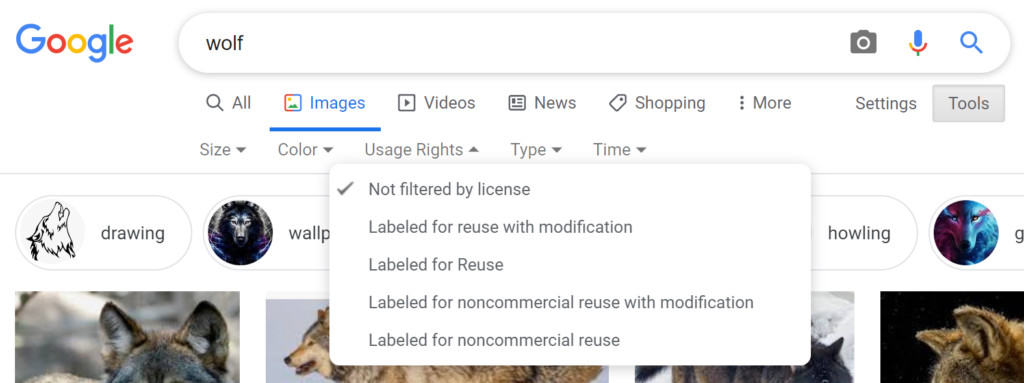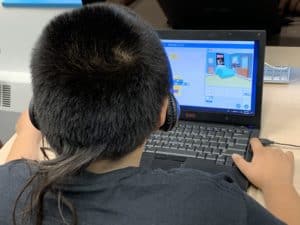Section Navigation
Introduction
The Seven Grandfather Teachings are culturally significant and guide many beliefs and practices of the Anishinaabe people. Art and creativity is very prominent in Indigenous communities and many artists draw pictures of these grandfather teachings in various forms and ways. This module will introduce the Seven Grandfather Teachings by using digital comic book strips.
Learning Goals
The goal of this module is for youth to learn about the Seven Grandfather Teachings and also how to create their own stories in a comic book style.
Vocabulary
- Panel
- A panel is one illustration on a page usually surrounded by a border. A comic book page is made up of one or more panels. Each panel moves the story along, by depicting an action with figures and speech bubbles.
- Caption
- A box that is separate from the rest of the panel usually used to provide context for what’s happening through the voice of a narrator.
- Speech Bubble
- These contain the dialogue of the characters and inside the panel. Each balloon has a “tail,” which points to who is speaking the dialogue.
Taken from the Ojibway Teachings. The Seven Grandfather Teachings can be seen as principles or set of ways to live the good life:
- Humility
- Humility is represented by the Wolf, and the wolf lives in a pack. Humility is to know that you are a sacred part of creation. The wolf reminds us to live life selflessly and unselfishly.
- Bravery
- Bravery is represented by the Bear. The mother bear has the courage and strength to face her fears and challenges to protect her young. The bear also shows us how to live a life balanced between rest, survival and play. To face life with bravery is to know courage.
- Honesty
- Honesty is represented by either the Raven or the Sabe, the Sabe (English version of Sasquatch) reminds us to be ourselves. Raven accepts himself and knows how to use his gift. To walk life with integrity is to know honesty. Be honest with yourself. Recognize and accept who you are.
- Wisdom
- The Beaver represents wisdom as he uses his natural gift wisely for his survival. The beaver also alters his environment in an environmentally-friendly and sustainable way for the benefit of his family. To cherish knowledge is to know wisdom. Use your inherent gifts wisely and know how to use them.
- Truth
- Truth is represented by the Turtle as he was here during the creation of the Earth, and carries the teachings of life on his back. The turtle lives life in a slow and meticulous manner because he understands the importance of both the journey and the destination. Truth is to know all of these things. Apply faith and trust in your teachings.
- Respect
- Respect is represented by the Buffalo. The buffalo gives every part of his being to sustain the human way of life, not because he is of less value, but because he respects the balance of life, and the needs of others. To honour all of creation is to have respect.
- Love
- The Eagle represents love because he has the strength to carry all the teachings. The eagle has the ability to fly the highest and closest to the Creator and also has the sight to see all the ways of being from great distances. The eagle’s teaching of love can be found in the core of all teachings, therefore an eagle feather is considered the highest honour and a sacred gift. To know love is to know peace.
Guiding Questions
- Has anyone heard of the Seven Grandfather Teachings?
- Why do you think these teachings are so important to Anishinaabe people? The Seven Grandfather Teachings were passed down through generations as a guide for a good and peaceful life.
- Out of the seven different teachings which one is your favourite and why?
Curriculum Links
This module provides an opportunity to address curriculum expectations in the Arts, Character Education, Media Studies and Indigenous Studies. Students will be introduced to the Seven Grandfather Teachings and create their own stories through digital art with online comic strips. This lesson is geared to students in Grades 3 to 5.
Materials
- Canva account – Register for Canva
- Seven Grandfather Teachings cards (enough for every two people)
- Scissors (to cut out the cards)
- Paper
- Drawing Utensils
Non-Computer Activity
Seven Grandfather Teachings Matching Game
This basic activity is a fun game that allows students to become familiar with the animals associated with the Seven Grandfather Teachings. The game takes 5 to 10 minutes to play. As the game is played in pairs, print enough handouts so that each pair has their own game. Students can cut out the pieces themselves if time permits; if not it can be done prior to class. If you do not have access to a printer have each group draw their own cards.
- Begin with a discussion of the Seven Grandfather Teachings, what each animal represents, and why these teachings are important.
- Shuffle the cards and place them face down in a grid. Children take turns flipping up two cards at a time to see if they have a match. If they don’t get a match, then the other player goes. They need to use their memory to remember the location of the cards to build their matches.
- If the students do not know the Seven Grandfather Teachings by heart, they can use the key code that is printed at the beginning of the game.
Storyboard Activity
Find a story book and pick a scene that you would like to turn into a small comic strip.
- Use a blank piece of paper and split it into the number of panels you would like for your comic.
- Break the script up and divide it among your panels.
- Draw the characters you want in each panel and try to make them represent the dialog.
- Include any speech bubbles and narration in each panel.
Share your comic with your classmates!
Another option for a class project would be to split a story up so each student can represent a small piece of the story. Post everyone’s comic strip together to tell the full story as a class.
Computer Activity
Creating Comic Strips Online
- Begin with an explanation of what comic strips are, using the information in the links provided. Howtoons has some great examples for students to check out.
- Students select one of the Seven Grandfather Teachings to write a comic strip about. For example, students could make a comic strip of the Turtle talking to other animals and demonstrating how going slower in life rather than rushing, leads to seeing more and making fewer mistakes. If there is enough time, students can create a longer comic strip using two animals.
- Students will need a Canva account. After they have created their account, the site should automatically go to the Comic Book Strip Layouts page. If not, type “Comic Book Strip Layouts” in the search bar at the top of the page.

4. There are many templates available to choose from, but make sure students only select the free templates. After choosing a template click the “Use this template” button.

5. Start by changing the title and adding your name as the creator. Text can be edited by double clicking on it. The menu across the top will change based on the type of element you are editing.

6. The font can be changed using the drop down menu on the left. The size can also be adjusted using the numbered drop down menu.
7. The colour can be changed by clicking on the “A” with the colour bar below it. Clicking the “B” will bold your text and the “I” will make it italics. The alignment of the text can also be changed by clicking on the horizontal line icon.
8. Other elements can be deleted by selecting the element and clicking the garbage pail icon.

9. Students can gather images from the internet and save them to their desktop, by right clicking on the image and clicking save. Creative Commons is the best place to find images that you can legally use.
10. To search google for free use images select the “tools” button under the search bar. Next click the “Usage Rights” drop down menu and select “Labeled for Reuse”

11. Students can also create their own images to use for their comic. Pinnguaq has a series of lessons on Pixel Art and a lesson on Inkscape.
12. On the left-hand side of Canva there is an upload button for adding images, backgrounds, text, and also a gallery of free elements.

13. Students can upload their images and then add text to create their stories. Canva has speech bubbles already included that students can use. To find them click elements and search “bubble”.

14. If they need to add another page to their layout, click “add new page” at the bottom of the screen.

15. Once students are satisfied with their comic strip they can download it to their computer by clicking the download button and selecting what format you want for the download

Conclusion
Once students have finished creating their comic strip, have them share their stories with the class, and explain how they apply to the Seven Grandfather Teachings. Reiterate the importance of the Teachings, and how the Anishinaabe people follow them as a guide to help them live a good life. The Seven Grandfather Teachings work best when they are used together. If we only follow some of the teachings we are not being the best person we could be.
Using comics in class is a creative and engaging way to reach your students. It also allows students to practice their communication skills through writing, having characters speak and drawings. For more information on using comic strips in the classroom check out this Teacher Guide.
Resources
- Canva Comic Strips
- Kiddle – Comic Strip Facts
- My Kids’ Adventures – How to create a comic strip with your kids in seven easy steps
- Kid Sites – Comic Samples
- The Seven Grandfathers Teachings
- Comic Strip Examples



